Menu
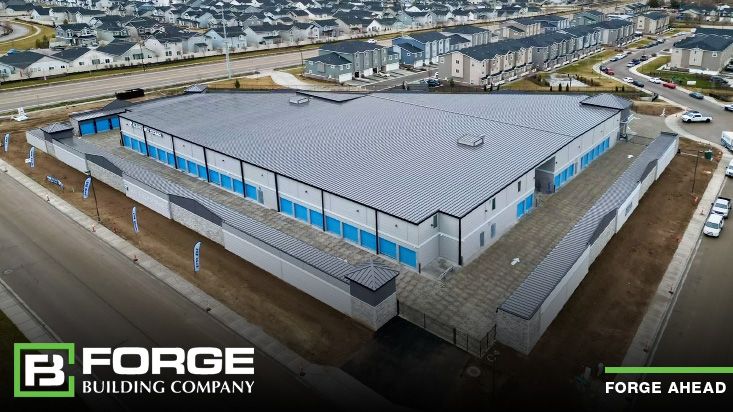
The self storage industry is evolving. As we enter 2025, this industry is well-positioned to adapt to the shifting landscape of increased mobility and shifting client expectations. Facility owners and operators who invest in flexible pricing, innovative technology solutions, and targeted regional marketing will be better equipped to thrive in this evolving market.
In our previous blog, “2025 Self Storage Industry Growth Projections and Trends,” we looked at top trends and innovations expected to shape the construction industry in 2025. From an investment standpoint, Self Storage still provides great opportunities for investors. The US market alone is expected to jump from $44.37 billion to $49.88 billion by 2029. This represents a Compound Annual Growth Rate of 2.37%1.
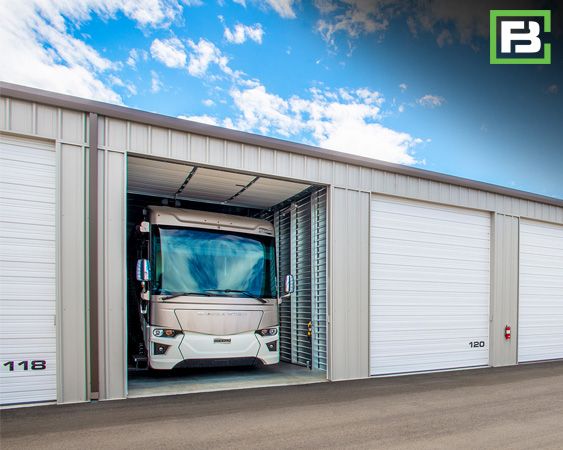 Price Matters. Price is a significant factor when it comes to self storage. In the Storable survey, 83% of respondents emphasized that price is a significant factor when choosing a storage unit. Affordable, flexible options will likely remain a key selling point for facility owners. Convenience and location also rank high, with 68% of respondents emphasizing the importance of accessible facilities.
Price Matters. Price is a significant factor when it comes to self storage. In the Storable survey, 83% of respondents emphasized that price is a significant factor when choosing a storage unit. Affordable, flexible options will likely remain a key selling point for facility owners. Convenience and location also rank high, with 68% of respondents emphasizing the importance of accessible facilities.This expansion has been fueled primarily by an increase in RV ownership and a rising population of boating enthusiasts, creating a demand for dependable storage solutions during periods of inactivity. Storage options may include uncovered storage, canopies (or covered storage), or storage condos (fully enclosed storage).
In our blog, “Investing in Storage Condominiums,” we address this sector of Boat and RV Storage as a great investment alternative.
Investors and facility owners should also consider the growing demand for short-term storage. With 79% of clients needing storage for six months or less, flexibility in rental terms and ease of extension could be a game-changer for attracting and retaining clients.
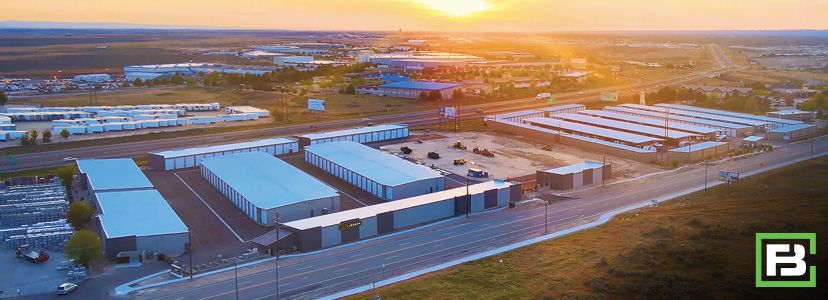
As more people plan moves, the demand for storage is projected to grow. Current facility owners must adapt by offering value-driven services while keeping prices attractive to stay competitive.
The global population is increasing. More people means more stuff creating a need to stash their belongings. With the increased cost of living, many young professionals are opting to rent rather than buy, living in apartments and condos with limited space.
Self storage is profitable. Revenue from self storage rentals and sales is on the rise. The US market alone is expected to jump from $44.37 billion to $49.88 billion by 2029. With high demand and significant cash flow potential, self storage is an appealing real estate investment.
The self storage industry shows no signs of slowing down, and recent trends explain why there are so many storage facilities. In our blog, “Self Storage is an Investment Alternative,” we discuss the primary reason investors look at this asset class is because it can be an inflation hedge. This is still true today.
Here’s what the Forge President and CEO have to say about “Self storage as an investment.”
Strong market fundamentals, smart investments in technology, and a growing client base all point to continued opportunities for self storage facility owners and investors. The demand for extra space isn’t going away anytime soon. For people and businesses with too much stuff and not enough room, self storage provides an ideal solution.
References
1. Davison, M. (2024, July 4). Storeganise. Retrieved from storeganise.com:
https://storeganise.com/blog/why-are-so-many-storage-facilities-being-built
2. Storable. (2024, October 22). Retrieved from storable.com:
https://www.storable.com/resources/learn/2025-self-storage-industry-outlook-trends-to-watch/
3. Investinselfstorage.com. (2024). Retrieved from StorageUnits:
https://investinselfstorage.com/2025-self-storage-industry-outlook-whats-ahead/
4. Verified Market Reports. (2024, November). Retrieved from verifiedmarketreports.com:
https://www.verifiedmarketreports.com/product/rv-and-boat-storage-market/
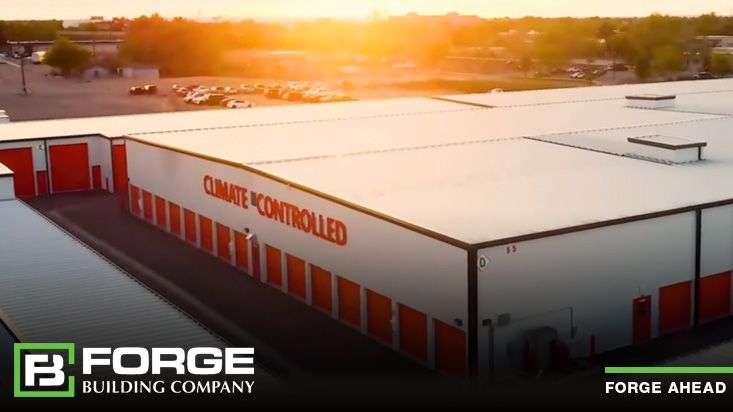
As the self storage market continues to grow, climate-controlled self storage is becoming increasingly popular as clients look for facilities with units that can store and preserve their valuable and sentimental items by controlling temperature and humidity. Climate-controlled self storage can benefit self storage owners in numerous ways – mainly by bringing in more income while differentiating the facility from its competitors. There are several considerations for building and/or converting climate-controlled storage units that we’ll look at in this blog.
The budget for climate-controlled self storage units should include all the costs associated with building and opening a facility. This includes materials, labor, permits and licenses, taxes, insurance, and equipment installation such as HVAC systems, flooring, elevators, and lighting fixtures. In addition to these hard costs, there are also soft costs that need to be taken into consideration such as design fees and marketing expenses.
Once you have factored in all the various cost elements associated with a climate-controlled self storage unit construction project, you can add up all the individual line items to get a total estimated cost for your project.
Before building or converting to climate-controlled storage, here are some things you should consider 1.
Design. Both single- and multi-story building designs are equally suitable for climate control. While a one-story facility only has one air conditioning output level to consider, in a two-story site, you may require greater A/C output on the second level since it will gain heat from the roof. This is why it is key to work with a knowledgeable contractor (such as Forge Building Company) who understands A/C loads.
Demand. Before investing in climate-controlled self storage, it is best to complete a market feasibility study of your location. This will enable you to analyze the competition, consumer/business mix, and income levels.
Areas with higher income levels usually mean that clients are more likely to spend additional money on a climate-controlled storage unit. Locations in business areas will attract a strong storage demand for items such as records, furniture, fixtures, and inventory. At the same time, locations close to highly traveled roads are also valuable to salespeople who may need to store items such as cosmetics and pharmaceuticals, vending supplies, and semi-perishables. Finally, long-term tenants may store their belongings across multiple seasons. These individuals understand that the temperatures can vary widely and go to extremes.
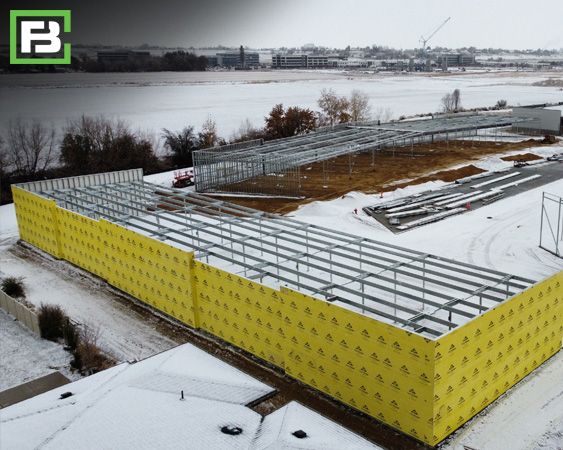 Cost. There are different factors that affect the cost to build a climate-controlled self storage facility including the size, number of storage units, and complexity of your project. When costing out a climate-controlled build, you will need to factor in the cost of the HVAC mechanical system and extra insulation your facility will require. A study by Storelocal Storage Coop suggests that you can expect to pay about $60-70 per square foot to build a non-climate controlled self storage facility (multi-story self storage units typically cost $70-95 per square foot. When costing out a climate controlled self storage unit build, a good rule of thumb is to add 15% to each square foot or to the total cost.
Cost. There are different factors that affect the cost to build a climate-controlled self storage facility including the size, number of storage units, and complexity of your project. When costing out a climate-controlled build, you will need to factor in the cost of the HVAC mechanical system and extra insulation your facility will require. A study by Storelocal Storage Coop suggests that you can expect to pay about $60-70 per square foot to build a non-climate controlled self storage facility (multi-story self storage units typically cost $70-95 per square foot. When costing out a climate controlled self storage unit build, a good rule of thumb is to add 15% to each square foot or to the total cost.
The cost for either type of facility can vary based on other factors as well – the cost of steel and your location. Costs tend to be higher in a major metropolitan area than in a small community. It is also key to remember that monthly utility costs will be greater for climate-controlled storage units. However, these costs will go down as capacity increases.
In a study by Statista Research Department, renting a climate-controlled self-storage unit in the U.S. was on average $10 more expensive than a non-climate-controlled unit in 2024. In April, the average rent for a climate-controlled unit was $149. Renting the smallest unit costs on average $53 2.
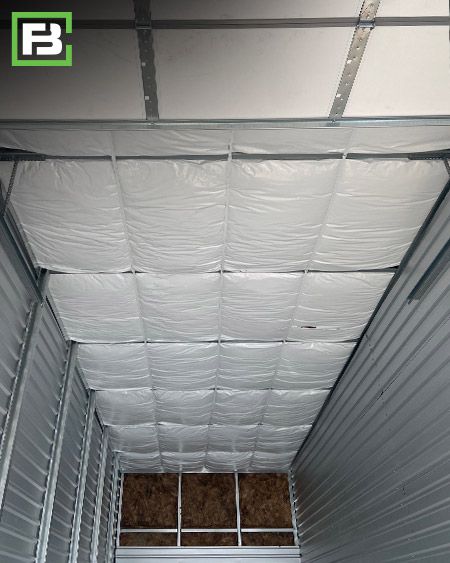 Insulation. The majority of self storage exterior walls contain long rows of metal doors. These doors are not air-tight, which can be a challenge with heating or cooling. That is why it is key to work with a self storage builder (such as Forge Building Company) that will design your climate control units with fully insulated interior walls and roofing.
Insulation. The majority of self storage exterior walls contain long rows of metal doors. These doors are not air-tight, which can be a challenge with heating or cooling. That is why it is key to work with a self storage builder (such as Forge Building Company) that will design your climate control units with fully insulated interior walls and roofing.
Typically, R 19 fiberglass is recommended for walls and R 38 for the roof. The facility’s heat loss and gain must be determined by the HVAC contractor who will calculate insulation values, ceiling heights, cubic area, type of construction, amount of lighting, exterior doors, number of windows, and the air infiltration from outside. It is key to work with a contractor that also understands commercial insulation requirements imposed by the International Energy Conservation Council (IECC) which are designed to preserve energy.
Temperature. Climate control units typically maintain a temperature below 85 degrees in the summer and above 55 degrees in the winter, with humidity below 65% to stop mold or mildew.
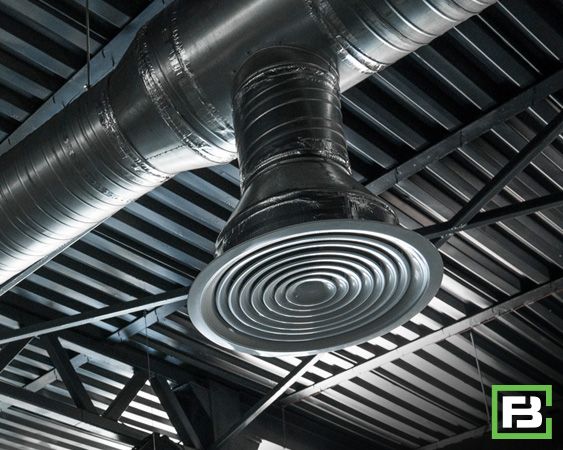 HVAC Systems. When it comes to selecting your HVAC system, it is key that you and your contractor research the costs and efficiencies of various heating and cooling units to determine which one is best for your facility. You will also want to identify HVAC systems that have a separate humidistat for reducing humidity.
HVAC Systems. When it comes to selecting your HVAC system, it is key that you and your contractor research the costs and efficiencies of various heating and cooling units to determine which one is best for your facility. You will also want to identify HVAC systems that have a separate humidistat for reducing humidity.
For other design considerations, see our blog: Is Climate-Controlled Self Storage Worth the Investment?
There are a number of benefits to building climate-controlled self storage. These include:
Climate-controlled self storage continues to be sought after by both clients and developers. While the cost to build is more expensive, they can be a great asset for self storage owners providing additional revenue and a competitive advantage to attract new tenants.
The best way to get started with this type of build is to partner with a highly-qualified self storage builder, like Forge Building Company, so you can rest assured that your facility will be built according to all applicable regulations. Partnering with the Forge team will get you the right preparation and execution so that your climate-controlled self storage facility can be constructed and open for business in no time.
For samples of climate-controlled self storage facilities the Forge team has built, see:
References
1. Storelocal.com. (2023, January 27). Retrieved from storelocal.com: https://members.storelocal.com/blog/considerations-for-a-climate-controlled-storage-facility
2. Statista. (2024, June 7). Retrieved from statista.com: https://www.statista.com/statistics/1051121/monthly-rent-climate-control-self-storage-unit-sizes-usa/
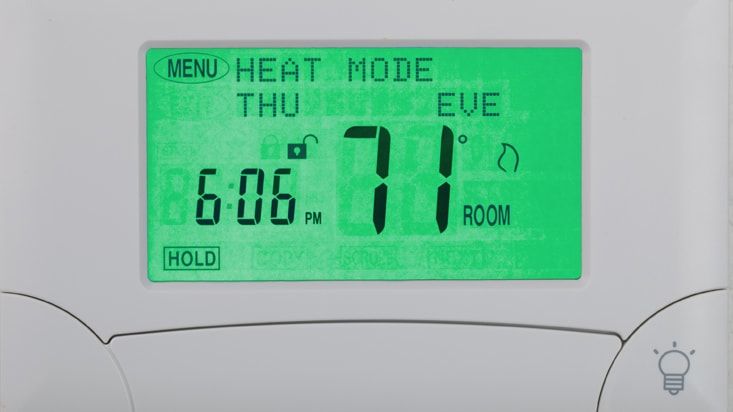
Very few places in the country are fortunate enough to avoid the frigid temperatures of winter, the extreme heat of summer and the humidity that comes with it. For that reason, climate-controlled storage spaces have exploded in popularity, and this is particularly true in areas prone to extreme temperatures or high humidity. Renters storing valuable or irreplaceable items often prefer climate-controlled self storage units due to the high degree of protection and peace of mind they provide.
In 2021, owners of self storage facilities saw extremely high occupancy rates. The average cost of renting a storage unit also surpassed pre-pandemic levels. Self storage business owners saw a shift in terms of the types of storage spaces renters desire, and many are updating their buildings or adding new ones to accommodate them. This is where climate-controlled units come into play.
The need for additional storage space is growing especially rapidly in lower-cost cities as population and migration growth continue to flourish in more affordable areas. In 2020, self storage occupancy rates held steady at around 92%, and self storage market insiders expect this trend to continue well into this year and beyond.1
Owning a climate-controlled storage business is a great investment. Storage business profit margin is up to 11% per year, where the capital-intensive business profit ranges between 3%- 5%.2
Climate-controlled units are also a great way to increase profit because they typically command higher rental rates than traditional space of the same size. The amount of upcharge will vary by region of the country; however, in some markets, this could be 15-35% or more.3 Another huge advantage is that the newest generation of 100% climate-controlled, multi-story buildings enables a developer to build roughly three times the rentable square footage on the same amount of dirt. This means the owner can absorb a much higher land cost. It also allows them to consider many more parcels for a project.4
Building a climate-controlled self storage facility is different from building the traditional ones. There are definitely more unique intricacies. Following are some design considerations.
When it comes to the design of your temperature- or climate-controlled self storage buildings, here are some common items to consider.
Costs. It’s common for commercial steel building developers to phase a project, but when planning a site with climate control, consider how the design will impact construction costs. The most cost-effective building is a large, wide structure.
On average, the cost of building a climate-control self storage is $35-$70 per square foot. It may also cost around $8-10 million for a 2.5 acre landed storage. This figure represents almost all costs, including land, land development, construction, permits, insurance, materials, labor, etc. The actual cost may vary depending upon your location, materials used, type of building, etc. This is simply a rough estimate based on 2021 factors.
A study by Storelocal Storage Coop suggests that when costing out a climate-control build, you also need to factor in the cost of the HVAC mechanical system and the extra insulation you’ll need. This could add, on average, 15% to each square foot or to the total cost when compared to building a non-climate controlled self storage facility.
Heating and Cooling. Depending upon the location of your facility, a facility owner must decide if they are going to offer both heating and cooling (or one or the other). Generally, a climate-controlled facility should maintain building and unit temperatures below 85 degrees in the summer and above 55 degrees in winter, with humidity below 65 percent to prevent mold and mildew.5
Moisture is the biggest design consideration. Split-system HVAC units work well in these situations. When used in conjunction with a dehumidifier, these systems ensure that stored belongings stay dry. Another consideration is to utilize ionizers in lieu of additional “outside air intakes” to help minimize moisture.
Unit access. Climate-controlled buildings are usually built with interior unit access via hallways, but more commercial steel building developers are building climate-controlled units with exterior, drive-up access. Since these units are open to the weather elements, climate-control can be a bit more challenging. Therefore, these units should be equipped with insulated sectional doors (typically R-19 insulating value) rather than traditional roll-up doors. The proper HVAC system can also help overcome these challenges.
Unit size. Interior-access buildings won’t contain units as large as those used for drive-up storage. The largest unit size in these buildings is typically 10-by-20.
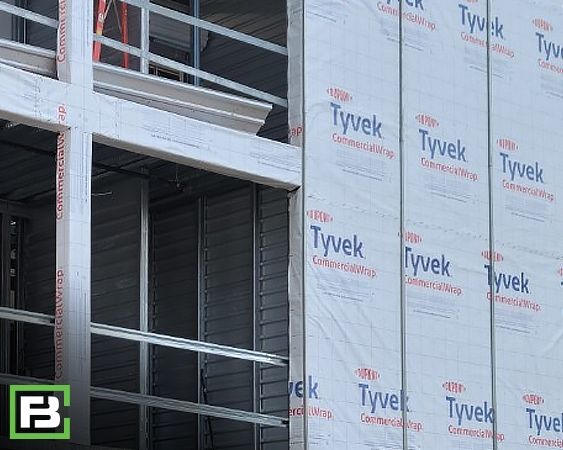 Insulation. How much insulation you need and what kind will vary based on local building codes, weather conditions, and owner preferences. The International
Energy Conservation Council recently changed its guidelines in many areas, requiring more insulation to better preserve energy. This isn’t a bad thing because it can provide facility owners the most cost-effective way to keep temperature and humidity at optimal levels.
Insulation. How much insulation you need and what kind will vary based on local building codes, weather conditions, and owner preferences. The International
Energy Conservation Council recently changed its guidelines in many areas, requiring more insulation to better preserve energy. This isn’t a bad thing because it can provide facility owners the most cost-effective way to keep temperature and humidity at optimal levels.
Inside Self Storage recommends a minimum of 6 inches of fiberglass (R19) for roofs and walls. The building’s heat loss and gain must be determined by the HVAC contractor. This contractor will calculate insulation values, ceiling heights, cubic area, type of construction, amount of lighting, exterior doors, number of windows, and the air infiltration from outside.
Projects can be built with spray-in foam, fiberglass batts, insulated panels or some sort of combination. While building a project with a higher R-value will cost more, it pays benefits in two ways – your operating costs will be lower contributing to a higher property value when it’s time to sell.
Other ways to insulate your facility include:
Roof pitch. You can choose from a variety of roof pitches for climate-controlled buildings. Roofs can be designed to allow room for the desired insulation thickness (R-value) directly under the panels. Or, on higher-pitched buildings, the insulation may be placed directly over the ceiling of the heated/cooled space as you would find in a home, with insulation on the attic floor rather than under the rooftop.
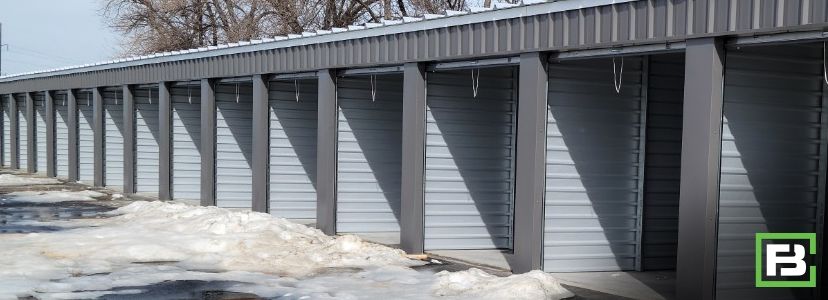
As the self storage industry continues to grow, the large majority of new builds are including climate-control in the mix. And in many markets, self storage sites consist entirely of climate-controlled units.
Climate-controlled units can be an excellent addition to your storage investments since these units command higher rental rates, bring in new clients and generate additional revenue.
Whether you want to add Climate-Controlled Self Storage units to your existing facility or plan to include climate-control in a new build, the team at Forge Building Company will help you design the most cost-effective solution.
Works Cited
1. Regency Steel Buildings. (n.d.). Retrieved from Ministorageoutlet.com: https://ministorageoutlet.com/self-storage-industry-projections/
2. Rider, J. A. (2022, February 20). howmuches.com. Retrieved from How Muches: https://howmuches.com/how-much-does-it-cost-to-build-a-climate-controlled-storage/
3. Statistica. (n.d.). Retrieved from Statistica.com: https://www.statista.com/statistics/1051121/monthly-rent-climate-control-self-storage-unit-sizes-usa/
4. Rowley, A. (2022, April 14). Inside Self Storage. Retrieved from Insideselfstorage.com: https://www.insideselfstorage.com/building-componentsmaterials/building-climate-controlled-self-storage-benefits-and-design
5. Storelocal Storage Coop. (2022, February 23). Retrieved from selfstorage.coop: https://www.selfstorage.coop/blog/considerations-for-a-climate-controlled-storage-facility
 Despite all of the craziness that the pandemic has caused, self-storage development continues its forward momentum—but not without impediments. The cost of raw materials is on the rise, and orders can take longer to ship, plus there are labor shortages. These issues will likely resolve in time, but there’s one obstacle poised to grow still more obtrusive: a lack of suitable sites on which to build. Between market saturation and increasingly restrictive zoning, builders and owners struggle to find suitable parcels to build self storage facilities. It’s a process that’s often taking longer and generating more frustration.
Despite all of the craziness that the pandemic has caused, self-storage development continues its forward momentum—but not without impediments. The cost of raw materials is on the rise, and orders can take longer to ship, plus there are labor shortages. These issues will likely resolve in time, but there’s one obstacle poised to grow still more obtrusive: a lack of suitable sites on which to build. Between market saturation and increasingly restrictive zoning, builders and owners struggle to find suitable parcels to build self storage facilities. It’s a process that’s often taking longer and generating more frustration.
Every self-storage construction project has its own nuances, and it’s never a “one size fits all” when it comes to construction but following are some basic “rules of thumb” to help point you in the right direction.
Additionally, also see our blog post, “Building a Commercial Storage Building” for more insights into understanding development fundamentals.
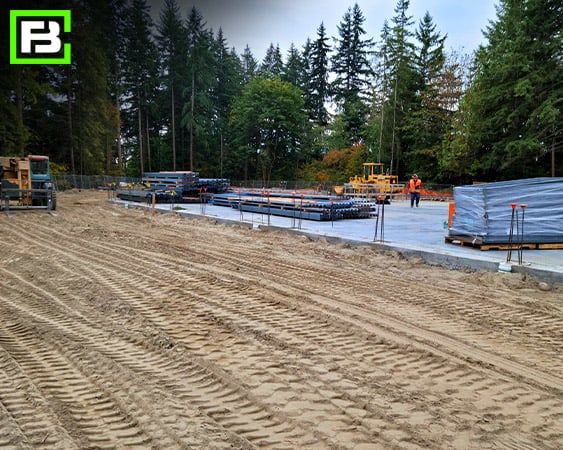
For a sample of the types of single-story self-storage buildings that Forge Building Company offers, please check out: Single-Story Self-Storage Building Contractors
And for more information on costs and location considerations, please see our blog titled “Contractors That Build Commercial Storage Buildings & Facilities.”
Finding a suitable parcel on which to build a self-storage facility with the best steel building contractor will also reap the highest return on investment and get your 2022 off to a great year.
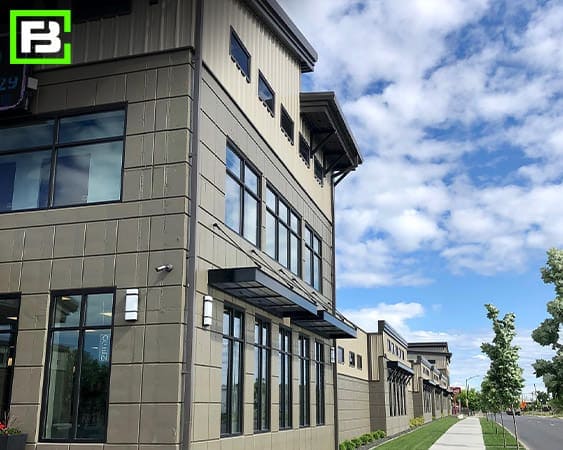 Whether you’re a seasoned veteran or new to the self-storage business, it is key that you learn how to identify and understand your target market using demographics as a tool. The correct use of this date is vital to your facility’s success. As with any real estate business or investment, location is of the utmost importance for a self-storage facility. It’s critical to understand your market, particularly if competitors are closing in.
Whether you’re a seasoned veteran or new to the self-storage business, it is key that you learn how to identify and understand your target market using demographics as a tool. The correct use of this date is vital to your facility’s success. As with any real estate business or investment, location is of the utmost importance for a self-storage facility. It’s critical to understand your market, particularly if competitors are closing in.
Demographics are the statistical data of a population within a defined geographic area. This usually includes population, age of the population, race, housing types, income levels, education levels and more. Knowing these details about your market will help you to make decisions about how to attract and service clients.
Sometimes you find a tract of land that looks good for self-storage. You may have driven around the area and become familiar with all the competitors, watched the traffic flow by the site, feel the price is right, and think local government officials will approve your development plan. When you look at the demographics reports for the area, you may find the region has a very low-density population and a very low-income level per person and household. However, you also may discover the majority of local residents rents their homes, and most of those live in multi-family units such as apartments or mobile-home parks. By doing some shopping, you find out the competitors are all full in their smaller unit sizes, and they’re all comparable in price. Second, you learn there’s sometimes a waiting list for certain unit sizes.
This information would tell me that in spite of the low density, a lot of this population appears to need storage, since the housing units are small, and they’re probably already using storage on a regular basis. The fact that unit prices are all on par indicates that price is important to this market, but there may be an opportunity to get slightly higher rents. The data also indicates that you probably shouldn’t build a “Cadillac” storage center when a mid-priced Chevrolet might work.
This information is, of course, just the beginning of what you would need to decide about whether to build, but it demonstrates how knowing market demographics can be extremely useful.
If you already operate a self-storage facility, and you’re noticing some drops in occupancy, using demographics reports can help you find out information such as:
 This presents a couple of interesting possibilities. For example, should you create any of your marketing materials in Spanish? What about putting some marketing materials together that show how freeing up room in the garage or carport makes for a less cluttered home and allows the homeowner to enjoy his space? You can even demonstrate how the average household should have some disposable income, since each home is well within the average income level for the area.
This presents a couple of interesting possibilities. For example, should you create any of your marketing materials in Spanish? What about putting some marketing materials together that show how freeing up room in the garage or carport makes for a less cluttered home and allows the homeowner to enjoy his space? You can even demonstrate how the average household should have some disposable income, since each home is well within the average income level for the area.
Using this data, you could also tell you that your market population is somewhat sophisticated and, thus, more prone to have a mobile device or computer. Now your method of advertising delivery can be varied and less costly.
These are just a couple of ways demographic information can be helpful. This information can also be used to determine unit pricing. If you find your area has a higher than average per-capita income level, it would be safe to assume your pricing could be a little higher. Conversely, if you’re having a hard time renting at your asking rates, you might want to look at the income levels in your market and make the appropriate adjustments.
Once you’ve identified your market using demographic data, it can be a useful tool in managing your marketing campaigns, determining which advertising sources to use, adjusting rental rates, predicting the unit types most likely to rent, etc. By knowing your market income levels, housing types, educational levels and more, will make your facility more productive and efficient. The use of demographic data is key to having a successful self-storage facility, whether it’s new to the market or well-established.
When you are ready to build or modify your self-storage facility, the team at Forge Building Company can help you achieve your goals. Give us a call to discuss your project.
To view our some of our recent project, see https://forgebuildings.com/projects/
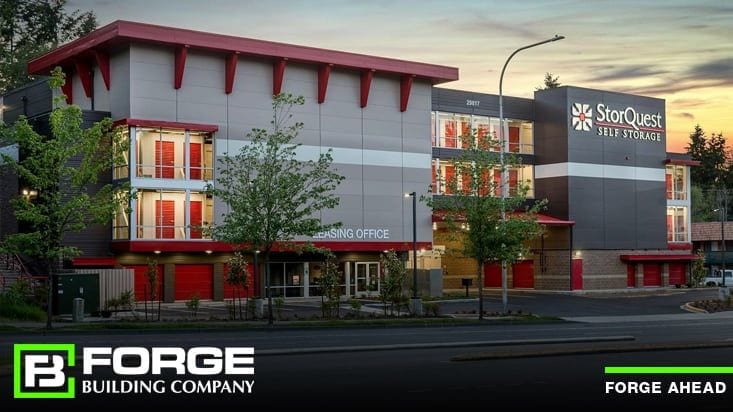
Very few places in the country are fortunate enough to avoid the frigid temperatures of winter every year. If you think it's cold outside, just imagine what it would be like in a storage unit. The freezing temperatures throughout the northern portion of the United States are cold enough to damage many belongings that are typically placed in storage. However, you can avoid damage caused by freezing temperatures by renting a climate controlled self storage unit, especially if you live in a region that experiences harsh winters.
Cold temperatures can be just as damaging to your belongings as to your body. Prolonged exposure to freezing temperatures can severely damage belongings commonly stored in a storage unit. Items to be especially cautious with include:
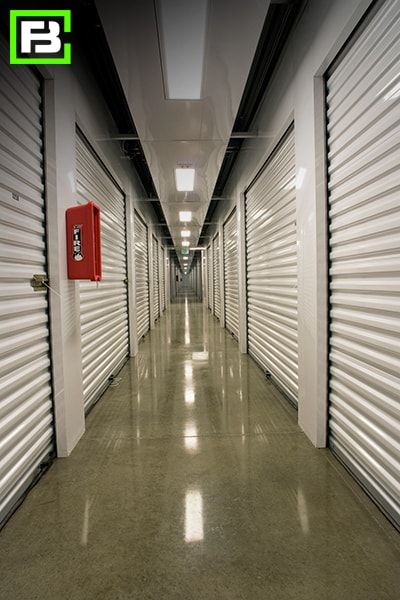 Electronics
ElectronicsFluctuating temperatures can create condensation inside electronics, causing irreparable damage. Likewise, anything with liquid already can crack due to expansion from freezing. This is especially true of battery cells, including those for cars, mowers, and other small engines, which can crack when frozen.
A temperature-controlled self-storage facility is both heated and cooled. Its purpose is to provide an environment suitable for preserving stored goods, so the temperature range will typically be higher or lower than what you would find in a home or office—usually heated to 55 degrees and cooled to 85.
While it’s commonly referred to as “climate-controlled” storage, the term “temperature-controlled” should be used unless the building also has a system to regulate humidity. Claiming to be climate-controlled while failing to address humidity might leave you open to legal trouble if the dampness damages a client's items. With today’s more efficient building insulation, it’s more important than ever to work with a reputable storage unit contractor to install a system that not only heats and cools but also monitors and removes humidity.
Let’s look at common uses, the benefits of temperature or climate control for self-storage facility owners and tenants, and some of the more critical design considerations.
The typical client who wants to rent climate-controlled storage has previously rented traditional storage with bad results and now wants to protect his or her belongings better.
Many people store unused items during the colder months of the year. Just as people store cold-weather items during the summer, you’ll often see people putting away summer belongings when the temperature drops. Storing seasonal items is an easy way to save space in your home. Here are a few seasonal belongings commonly stored during the winter.
Summer clothing – In a small living space, putting out-of-season clothing in a storage unit can make a big difference.
Another reason many people use storage during the winter is if they’re moving to a new home or apartment. While spring and summer are busier for real estate, people move year-round for various reasons. When moving, a storage unit can give you a place to store belongings between homes, making the entire process much more manageable.
Climate controlled self storage buildings offer several benefits for storage unit owners. First, you get increased land coverage. Compared to drive-up buildings, typically 30 to 40 feet wide, climate-controlled buildings can be up to 200 feet or more. This width reduces the amount of pavement necessary on the property and increases the amount of rentable space. The interior hallways are usually 5 feet wide and occupy only 15 to 20 percent of the space. This increased coverage can make it possible to develop on more expensive land in a better location than could be justified with traditional storage only.
Climate control can also serve as a market differentiator. Self-storage has penetrated just about every community in the country. Working with a quality self-storage contractor to incorporate climate control can set your site apart. So, while building and operating climate-controlled storage costs are higher, the increased rental rates are also significantly higher in most markets. These units usually rent for a 15 percent to 35 percent premium compared to standard units.
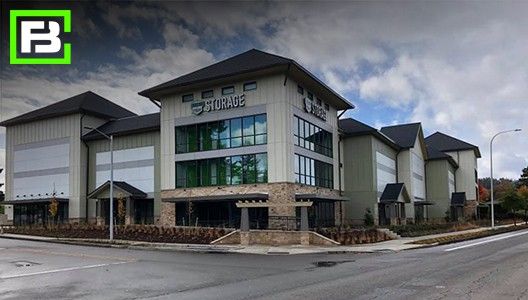 When it comes to the design of your temperature- or climate-controlled self-storage buildings, here are some common items to consider.
When it comes to the design of your temperature- or climate-controlled self-storage buildings, here are some common items to consider.
Costs. It’s common for commercial steel building developers to phase a project, but when planning a site with climate control, consider how the design will impact construction costs. The most cost-effective building is a large, wide structure.
Full vs. partial control. Some buildings are designed with both exterior-access ambient-temperature units and interior-access temperature-controlled units. While these projects allow for various unit types in a single structure, their popularity is declining. One reason is that the weather can create challenges when you build in a northern climate. Snow and ice will melt faster over the heated portions of a building, and if the runoff travels over a non-heated portion, ice dams may result.
Another reason is that stricter energy codes specify an insulated barrier between the foundations of climate-controlled and non-climate-controlled portions of a building. With the cost and complexity this adds to a project, it’s more cost-effective to design entirely climate-controlled buildings.
Unit access. Climate-controlled buildings are usually built with interior unit access via hallways, but more commercial steel building developers are building climate-controlled units with exterior access. These units should be equipped with insulated sectional doors (typically R-19 insulating value) rather than traditional roll-up doors. They should also be priced at a premium, as clients are willing to pay for the convenience of direct access.
Unit size. Interior-access buildings won’t contain units as large as those used for drive-up storage. The largest unit size in these buildings is typically 10-by-20.
Insulation. How much insulation do you need, and what kind will vary based on local building codes, weather conditions, and owner preferences? Projects can be built with spray-in foam, fiberglass bats, insulated panels or combinations. While building a project with a higher R-value will cost more, it pays benefits in two ways – your operating costs will be lower, contributing to a higher property value when it’s time to sell.
Roof pitch. You can choose from a variety of roof pitches for climate-controlled buildings. Roofs can be designed to allow room for the desired insulation thickness (R-value) directly under the panels. Or, on higher-pitched buildings, the insulation may be placed directly over the heated/cooled space ceiling, as you would find in a home, with insulation on the attic floor rather than under the rooftop.
Condenser location. Climate-control buildings commonly have recessed entries, which provide a staging area out of the weather and a place for the condenser unit. However, there are some options for putting the condenser unit outdoors. This may be the best option if there’s a place where it won't be vulnerable to client vehicles. Rooftop placement isn’t preferred due to the potential for creating leaks when penetrating the roof and possible damage from installers walking on the roof.
HVAC equipment. Your HVAC installer will guide you in choosing the equipment you need. However, HVAC equipment should be undersized for the space. It’ll run more often but consume less energy. In the summer, the result will be that the smaller HVAC system will circulate more air and do a better job removing humidity than a more robust system that runs for shorter intervals.
Most self-storage industry units across the U.S. are still the standard drive-up building; however, more sites are starting to include climate control. In some markets, many storage sites consist entirely of climate-controlled units. They can be an excellent addition to your storage development in the right market. Using insulation and central heating, a climate-controlled unit will protect your client's belongings in even the harshest winters.